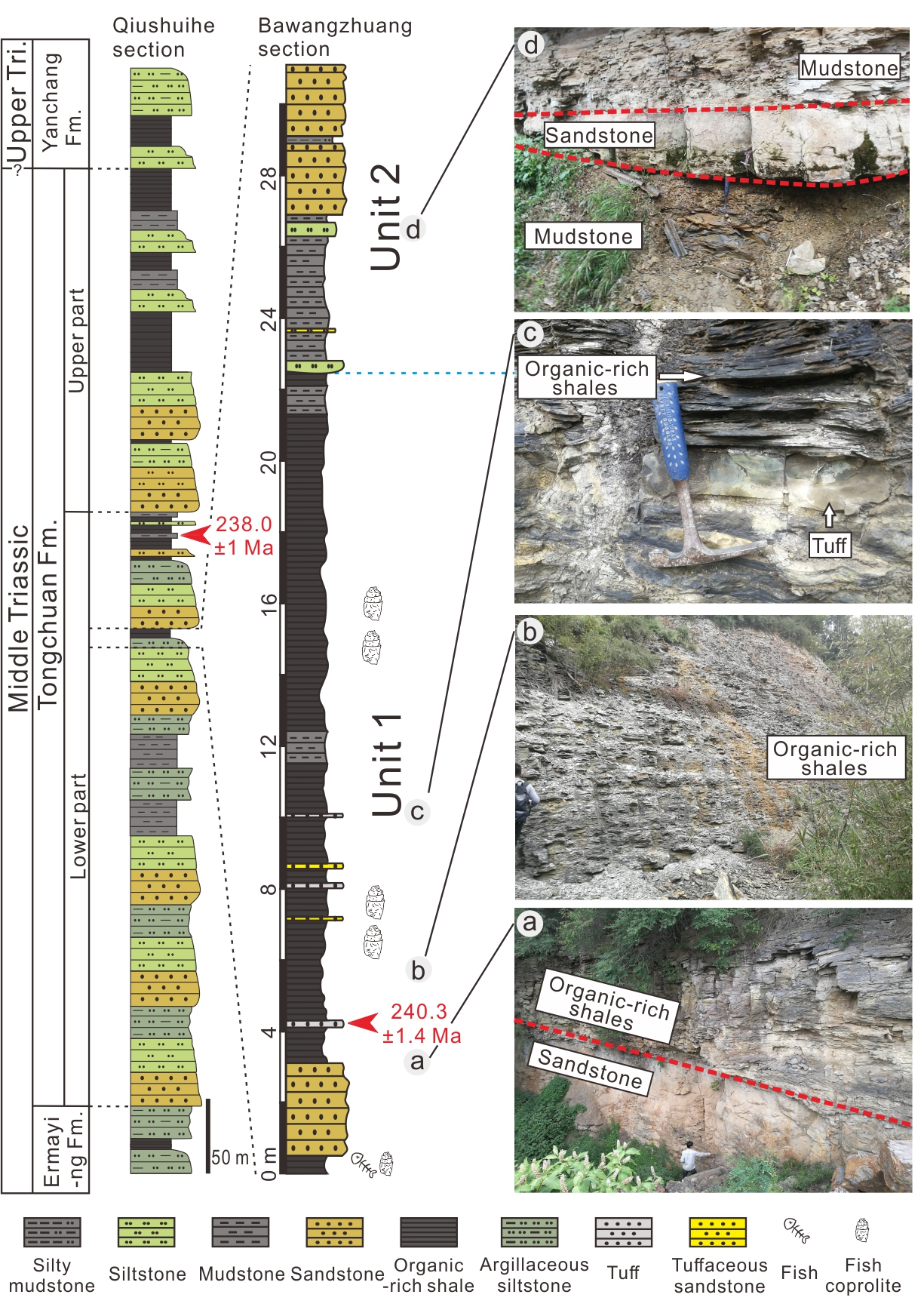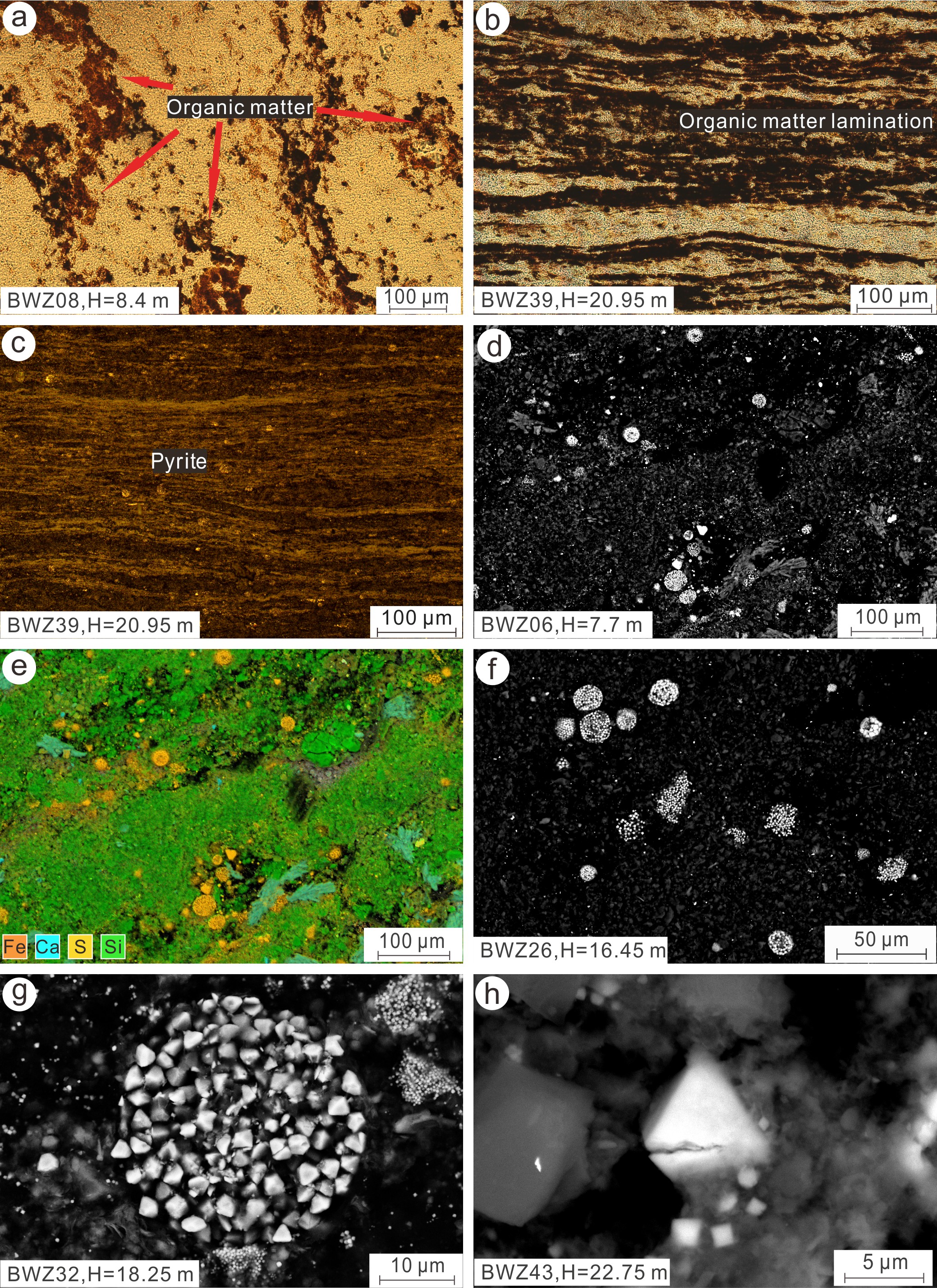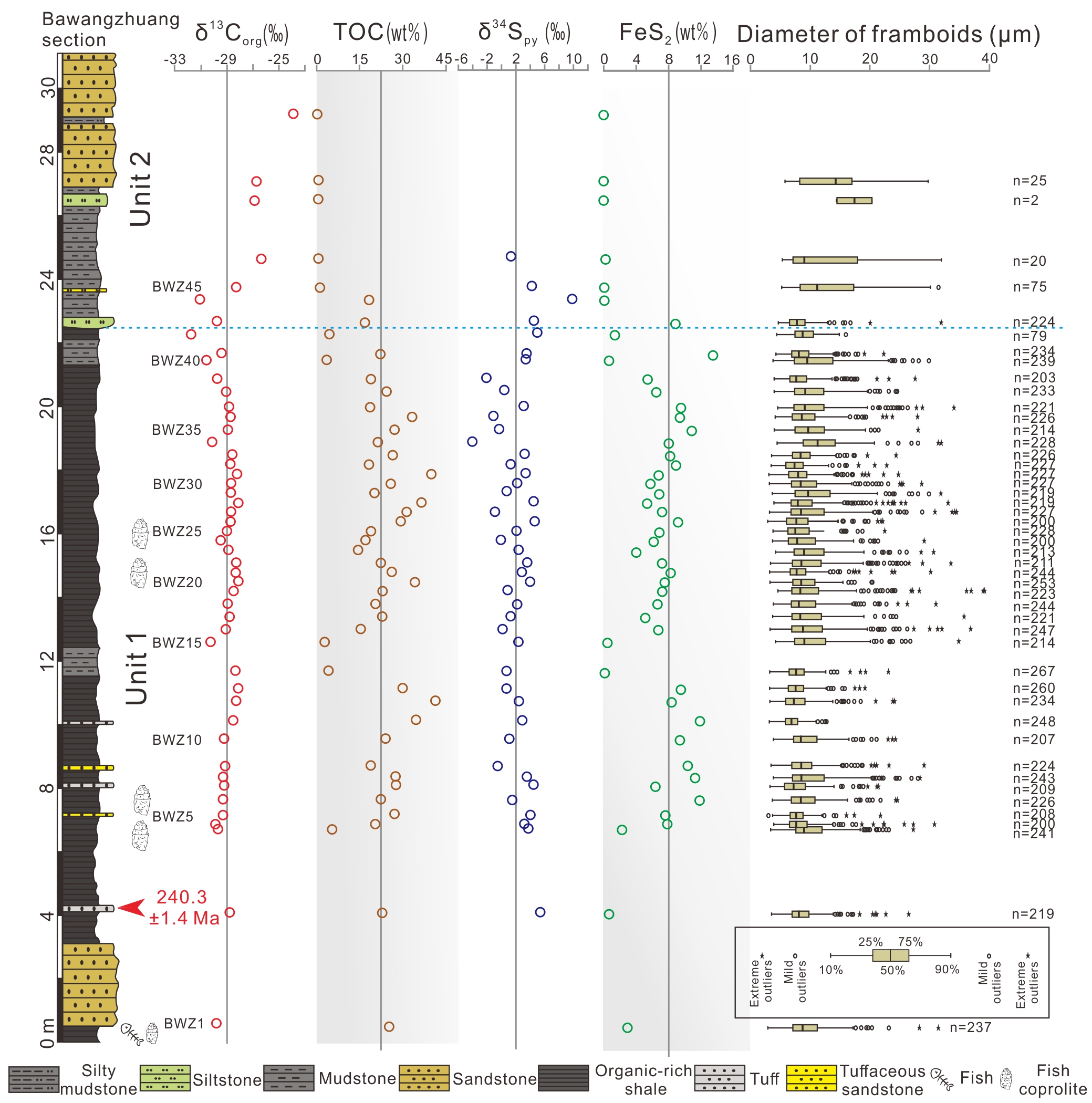The oil shale of the Tongchuan Formation has high potential for oil production. The results of this analysis also provide an important basis for the formation and preservation environment restoration of the oil shale of the Tongchuan Formation, and the related research results have been recently published in the international journal Geological Journal.
The Ordos Basin is the second largest sedimentary basin in China, located in the western part of the North China Craton. The Tongchuan and Yanchang formations are two dominant sedimentary sequences in the Ordos Basin, occurring in the Middle Triassic and Upper Triassic series, respectively. The organic-rich shales in the Yanchang Formation have been considered to be the main hydrocarbon source rock in the Ordos Basin, a great deal of research works have been done on its sedimentary environment. Similarly, thick organic-rich shales are also developed in the Middle Triassic Tongchuan Formation, which immediately underlies the Upper Triassic Yanchang Formation.
The earliest known appearance of a Mesozoic-type of tropical, multi-levelled lacustrine ecosystem is also reported from these shales. Up till now, studies of the depositional environment of the Tongchuan shales have been lacking, although it is of significance for understanding the formation and preservation of organic-rich shales and lacustrine fossils.
Recently, the research team led by Nanjing Institute of Geology and Palaeontology, Chinese Academy of Sciences (NIGPAS) carried out a systematic studies focused on high-resolution carbon (δ13Corg) and sulphur (δ34Spy) isotope analysis as well as undertook total organic carbon (TOC)/pyrite contents and pyrite morphology investigation, and framboidal pyrite size measurements in Tongchuan Formation shales of the Bawangzhuang section of the southern Ordos Basin.
Remarkably high TOC (23 ± 9%) and pyrite (7 ± 3%) contents were obtained from the shales, which indicate a large amount of organic carbon and pyrite burial and high primary productivityduring shale deposition. These TOC values are even higher than those from the Yanchang Formation (6%–14%), indicating the Middle Triassic Tongchuan Formation also have high oil-generating potential. And the low varying δ13Corg values (31.8‰ to 28.1‰; average value of 29.1 ± 0.7‰) in Tongchuan Formation suggest balanced and consistent carbon cycles and the high TOC content is probably produced by abundant photoplankton during shale deposition.
Dr. ZHAO Xiangdong say, “framboids are the dominant pyrite morphology in the pyrite crystals and show large and variable mean diameters (7.0 ± 1.7 μm to 14.3 ± 6.8 μm) across the section, indicating oxic–dysoxic bottom water during shale deposition.” δ34Spy with narrow and less variable values, ranging from 4.1‰ to 4.9‰. Integrated with pyrite content and morphological patterns, consistent δ34Spy values probably demonstrate a relatively open environment for the formation of sedimentary pyrite, and thus a shallow chemocline that was quite close to the water-to-sediment interface during shale deposition.
Overall, the organic-rich shales of the Tongchuan Formation were probably deposited under oxic–dysoxic bottom-water conditions. Shallow chemocline depth combined with moderately high sedimentation rate and high primary productivity may have played crucial roles in the deposition and formation of the organic-rich shales in the Tongchuan Formation. The shallow chemocline also facilitates the fossil preservation in a lacustrine environment.
Relevant research work was jointly funded by the Chinese Academy of Sciences, the National Natural Science Foundation of China, and the China National Petroleum Company.
Reference: Zhao, X., Wang, W., Xie, G., Pan, S., Jarzembowski, E. A., & Zheng, D. (2021). Depositional environment of Middle Triassic organic-rich shales in the Ordos Basin, Northwest China. Geological Journal, 1–12. https://doi.org/10.1002/gj.4215

Figure 1: Field photographs of the Bawangzhaung section.

Figure 2: Petrographic photographs of the Bawangzhuang section.

Figure 3: Geochemical profiles at the Bawangzhuang section.
Contact:
LIU Yun, Propagandist
Email: yunliu@nigpas.ac.cn
Nanjing Institute of Geology and Palaeontology, Chinese Academy of Sciences
Nanjing, Jiangsu 210008, China
Download:
